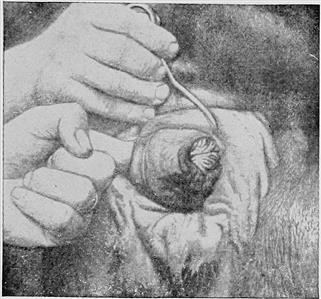The Infertility Organization
The Difference Between Infertility and Sterility
We are the complete source for complete information and resources for The Difference Between Infertility and Sterility on the web.
Intrauterine insemination. For this procedure, after semen gets rinsed with a special solution, a doctor places it into your uterus when you're ovulating. Therefore we recommend a fertility evaluation if a couple has been attempting pregnancy for 6 months or more when the woman is 35 years of age or older. They can often recommend a counselor and others who can offer appropriate support.
In most cases however, sperm function may not improve and therefore any attempts at pregnancy may require additional treatments or procedures performed by our clinic. Vasectomy and its Microsurgical Reversal. (PDF, 17 MB) Urologic Clinics of North America, 1978. Careful monitoring during treatment and pregnancy can help reduce the risk of complications. El Uso de las Espermátides en la Azoospermia. (PDF, 12 MB) Chapter 42 from Reproducción Humana, 2002. Judaism and Repoductive Technology. (PDF, 160 KB) 2003.
Much more Resources For Female Karyotype Infertility

Below are Some Even more Resources on Female Karyotype Infertility
Successful Autotransplantation of an Intra-abdominal Testis to the Scrotum by Microvascular Technique. (PDF, 11 MB) The Journal of Urology, 1976. 8 These studies are more sensitive and may delineate an abnormally formed uterus or structural problems, such as fibroids.
Much more Resources For The Difference Between Infertility and Sterility
It has been proven useful in overcoming infertility conditions, such as blocked or damaged tubes, endometriosis, repeated IUI failure, unexplained infertility, poor ovarian reserve, poor or even nil sperm count. In 1985, he constructed the pelvi-trainer = laparo-trainer, a practical surgical model whereby colleagues could practice laparoscopic techniques.
Below are Some Even more Details on Female Karyotype Infertility
Smoking: Smoking significantly increases the risk of infertility in both men and women, and it may undermine the effects of fertility treatment. Alcohol: Any amount of alcohol consumption can affect the chances of conceiving. Isodicentric Y Chromosomes and Sex Disorders as Byproducts of Homologous Recombination that Maintains Palindromes. (PDF, 1 MB) Cell, 2009. Primary infertility When a woman is unable to ever bear a child, either due to the inability to become pregnant or the inability to carry a pregnancy to a live birth she would be classified as having primary infertility. They may go unnoticed until a man tries to have a baby. Dr Freundl from the University of Heidelberg suggests that tests which use LH as a reference often lack sensitivity and specificity.[13] Classification[edit] The World Health Organization criteria for classification of anovulation include the determination of oligomenorrhea (menstrual cycle >35 days) or amenorrea (menstrual cycle > 6 months) in combination with concentration of prolactin, follicle stimulating hormone (FSH) and estradiol (E2). Congenital blockage of the ductal system An increased rate of duct obstruction is observed in children of mothers who were exposed to DES during pregnancy. High Fertilization and Pregnancy Rate after Intracytoplasmic Sperm Injection with Spermatozoa Obtained from Testicle Biopsy. (PDF, 3 MB) Human Reproduction, 1995. Prior to its conception, laparoscopy was a surgical approach with very few applications, mainly for purposes of diagnosis and performance of simple procedures in gynecologic applications.[citation needed] The first publication on modern diagnostic laparoscopy by Raoul Palmer appeared in 1947,[36] followed by the publication of Hans Frangenheim and Kurt Semm, who both practised CO 2 hysteroscopy from the mid-1970s.[37] In 1972, Clarke invented, published, patented, presented, and recorded on film laparoscopic surgery, with instruments marketed by the Ven Instrument Company of Buffalo, New York.[38] In 1975, Tarasconi, from the Department of Ob-Gyn of the University of Passo Fundo Medical School (Passo Fundo, RS, Brazil), started his experience with organ resection by laparoscopy (Salpingectomy), first reported in the Third AAGL Meeting, Hyatt Regency Atlanta, November 1976 and later published in The Journal of Reproductive Medicine in 1981.[39] This laparoscopic surgical procedure was the first laparoscopic organ resection reported in medical literature.
Previous Next
See also
History Taking in Infertility Case
Experience at Infertility
Apollo Infertility Center Hyderabad